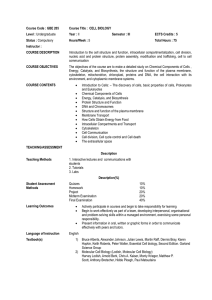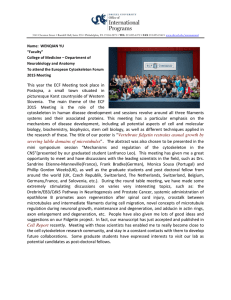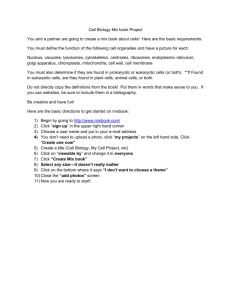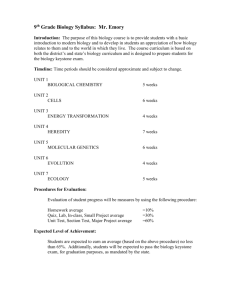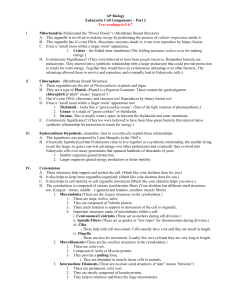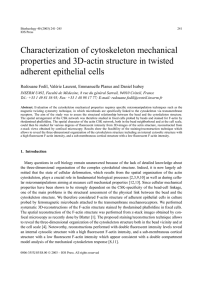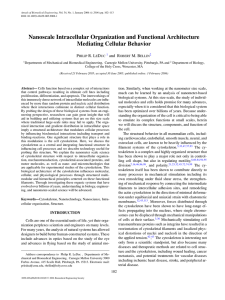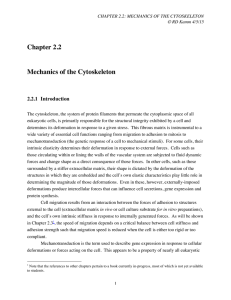PHYSICS & ASTRONOMY COLLOQUIUM UNIVERSITY OF WISCONSIN – STEVENS POINT
advertisement
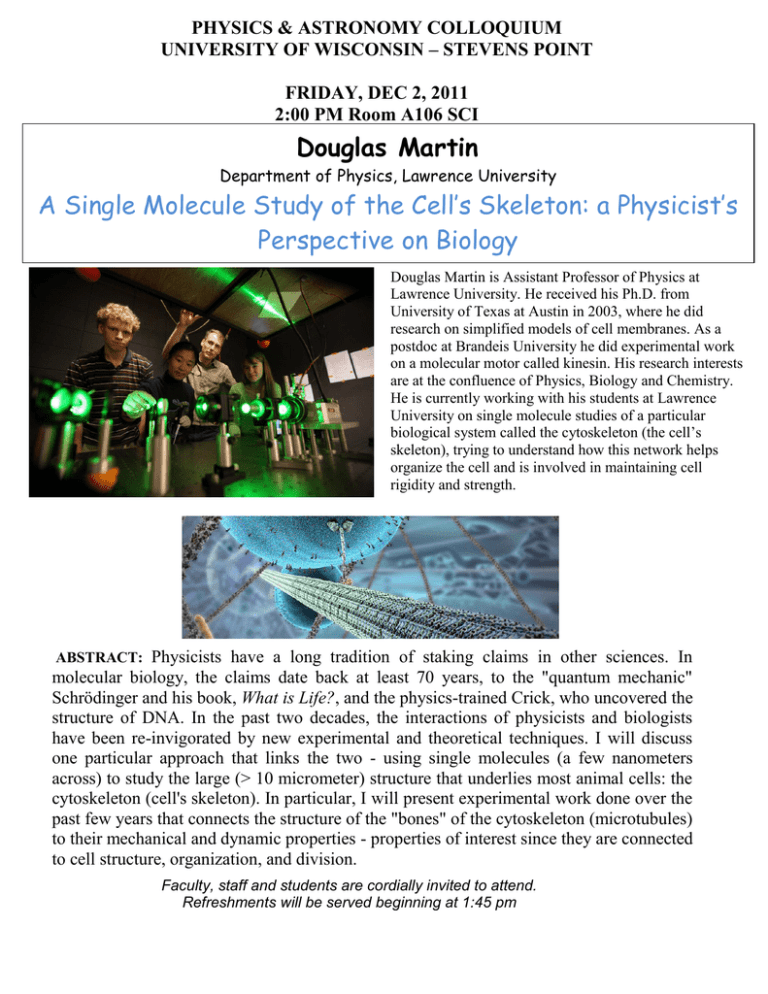
a PHYSICS & ASTRONOMY COLLOQUIUM UNIVERSITY OF WISCONSIN – STEVENS POINT FRIDAY, DEC 2, 2011 2:00 PM Room A106 SCI Douglas Martin Department of Physics, Lawrence University A Single Molecule Study of the Cell’s Skeleton: a Physicist’s Perspective on Biology Douglas Martin is Assistant Professor of Physics at Lawrence University. He received his Ph.D. from University of Texas at Austin in 2003, where he did research on simplified models of cell membranes. As a postdoc at Brandeis University he did experimental work on a molecular motor called kinesin. His research interests are at the confluence of Physics, Biology and Chemistry. He is currently working with his students at Lawrence University on single molecule studies of a particular biological system called the cytoskeleton (the cell’s skeleton), trying to understand how this network helps organize the cell and is involved in maintaining cell rigidity and strength. ABSTRACT: Physicists have a long tradition of staking claims in other sciences. In molecular biology, the claims date back at least 70 years, to the "quantum mechanic" Schrödinger and his book, What is Life?, and the physics-trained Crick, who uncovered the structure of DNA. In the past two decades, the interactions of physicists and biologists have been re-invigorated by new experimental and theoretical techniques. I will discuss one particular approach that links the two - using single molecules (a few nanometers across) to study the large (> 10 micrometer) structure that underlies most animal cells: the cytoskeleton (cell's skeleton). In particular, I will present experimental work done over the past few years that connects the structure of the "bones" of the cytoskeleton (microtubules) to their mechanical and dynamic properties - properties of interest since they are connected to cell structure, organization, and division. Faculty, staff and students are cordially invited to attend. Refreshments will be served beginning at 1:45 pm

